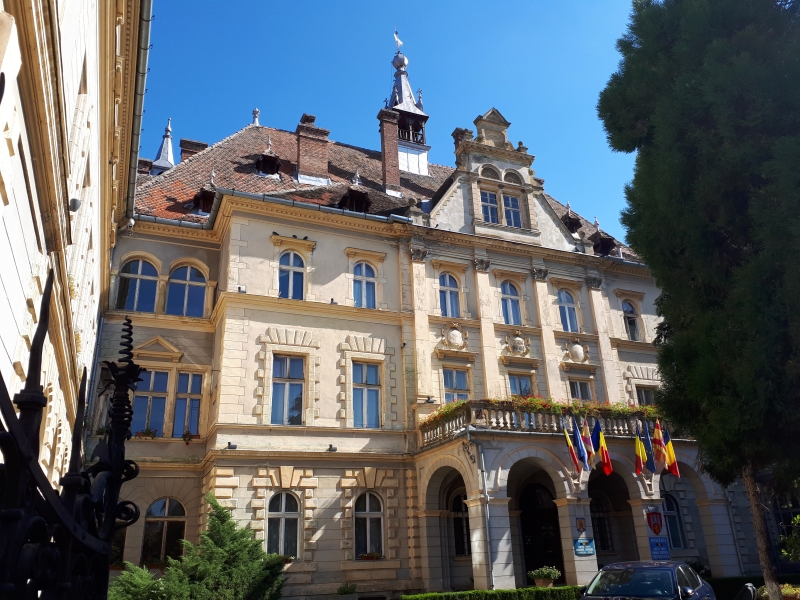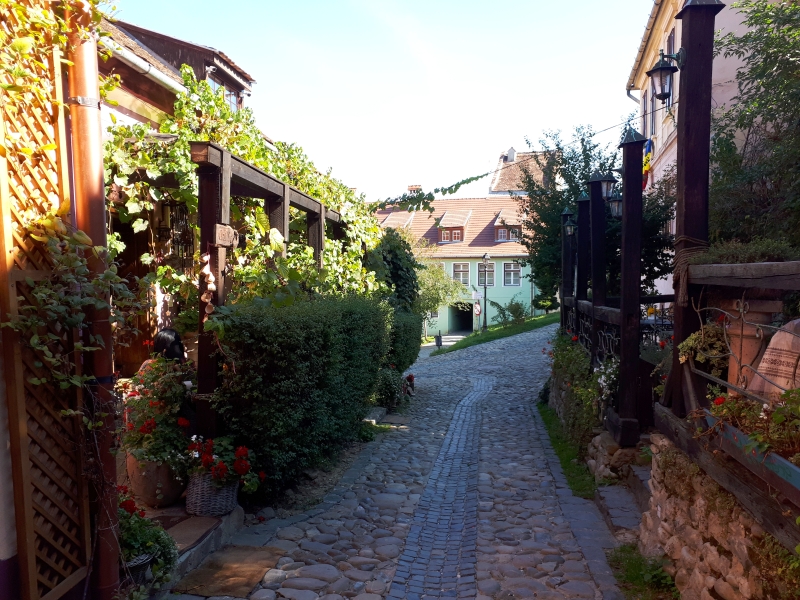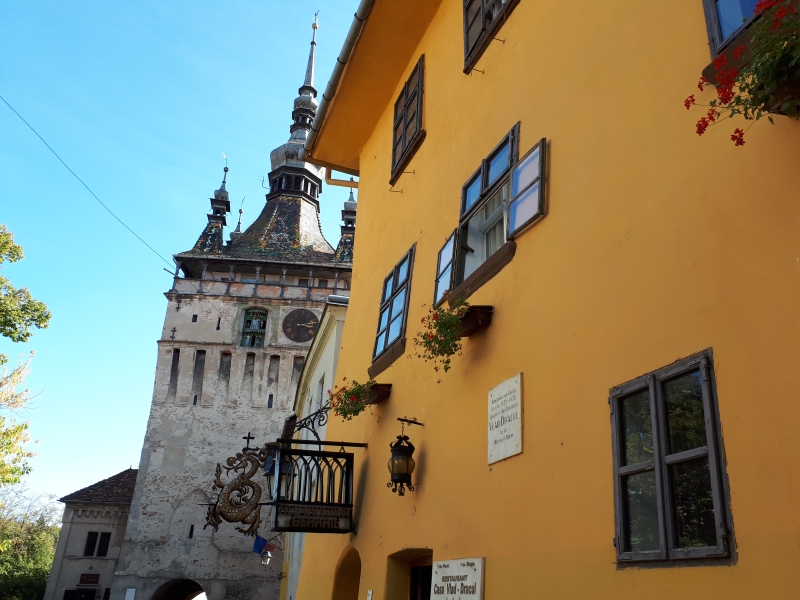Sighișoara (Schässburg in German, Segesvár in Hungarian) is one of the most beautiful cities in Transylvania and one of the seven main German cities that gave birth to historical Transylvania. In the German language, Transylvania is translated by Siebenbürgen or Seven Towns, highlighting the main Transylvanian Saxon fortified towns: Bistritz (Bistrița), Hermannstadt (Sibiu), Klausenburg (Cluj-Napoca), Kronstadt (Brașov), Mediasch (Mediaș), Mühlbach (Sebeș) and Schässburg (Sighișoara). Built on the ruins of an ancient Roman fort (Castrum Sex), then important center for both Austria-Hungary and Germany, the city is listed at UNESCO as a World Heritage Site. Home for a yearly medieval festival, it is largely considered the most beautiful and well-preserved medieval citadel in Europe, and one of the few fortified towns that are still inhabited today. Being also the birthplace of Vlad Țepeș (Vlad III the Impaler, widely known as Dracula) only adds to its fame. This is going to be a long article, full of the images that I took during my recent trip there.

The main entry point in the citadel and the main tower – the Clock Tower. Baroque elements, it has also mechanical puppets (figurines) and is regarded as the symbol of Sighisoara. Now the local museum of history.

Quite close to the main tower is the Ironsmiths’ Tower and the Church of the Dominican Monastery, a mixture of baroque and gothic elements.

Furthermore, the City Hall of Sighisoara.

The citadel has plenty of small roads. Here is the Tinsmiths’ street.

The entrance in the Citadel Square (Piața Cetăți), home for the House on the Rock (Casa de pe stâncă) and the Stag House (Casa cu Cerb), among others.

Here is the Stag House, the image on a fresco being continued with the head of a stag. Note the typical bilingual names of the streets, in German and Romanian.

The fortress has many towers; this is the Tailors’ Tower (Turnul Croitorilor), located opposite to the Clock Tower and guarding the second gateway into the citadel.

The Bootmakers’ Tower (Turnul Cizmarilor).

And this is the Tinsmiths’ Tower (Turnul Cositorarilor).

The fortress has also cozy gardens and lots of flowers.

Since the fortress isn’t at the same level, there are up and down roads. One of them is particular, built in 1642 – the Scholars’ Stairs – for easy access to the school and the church uphill (Bergkirche) during the winter. When built, there were 300 steps, but now there are only 176 stairs left. Quite enough though.

Here is Vlad Dracul House with the Clock Tower in the background. Here lived in exile Vlad Dracul, the father of Vlad the Impaler (Dracula), between 1431 and 1435 (to give you an idea about the time frame). Most likely, here is the birthplace of Dracula. This is the oldest stone structure in the city.

The Carpenter’s Street – authentic flavor of medieval times.

Details from some houses on this street.

A view towards the hill (Stag House to the left).

I conclude the article with three images in a row – the perspective of Sighisoara as viewed from the Citadel.


